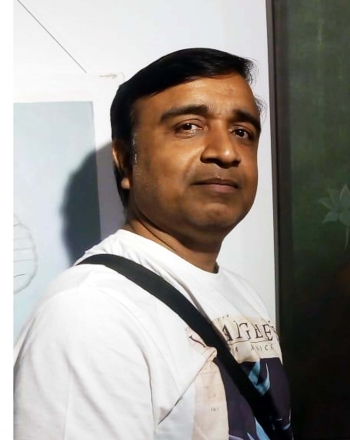
“Great things are done by a series of small things brought together.”
Vincent van Gogh
Paintings are like a reflection of an artist’s soul on the canvas. Right from the color combinations to the little shades on the corners to the loose strokes of the brush, everything in an artwork is the representation of an artist’s subconscious.
What is the most appealing artwork you have ever seen? Was it the ‘Mona Lisa’ from Leonardo Da Vinci, or is it the ‘Girl with a Pearl Earring’ by Johannes Vermeer or the ‘Starry Night’ by Vincent Van Gough? Whatever it may be, you will agree that the ecstatic emotion that comes along seen an appealing and exquisite piece of artwork is just incomparable to anything else.
Why do you think that the artists and art lovers from time and again have compared the feeling of making or observing a painting with the emotion of meeting one’s own creator? Because that’s how you feel when you witness a majestic artwork.
Since I belong to India, there was never the scarcity of good paintings here. India, being a nation where 22 languages are spoken and 29 states stand together, it is quite obvious that the rich cultural heritage of this nation gives birth to a number of art forms.
Indian art is a subtle market of paintings, artefacts, sculptures, statues, etc. People in India are quite consumed by the idea of religion and that is why you can see the rising popularity of Ganesha paintings, Shiva paintings, and so on.
Till 1947, India didn’t exist in the world art market, on papers. Art in India goes back 5000 years when ancient men used to craft miniatures and wall art on the walls of caves.
Since this blog is going to revolve around Indian paintings and the difference Indian art is making to the world, let’s start:
The Rise of Indian Art
India has served various foreign rulers in the last few centuries. The nation is just 71 years old independent. During the Mughals rule, art in India flourished and some of the paintings styles can still be seen in practice.
Our traditional art forms such as Madhubani paintings is a sheer example of how a style which was incepted around 2500 years ago still exist and practised on a regular basis. The backstory of Madhubani paintings goes back to the time of Ramayana.
Another example would be miniature paintings that are said to have its root seeded during the Mughal rule. With Persian art as its source of inspiration, Miniature painting is said to have bloomed under the rule of great king Akbar and Shah Jahan.
Warli paintings are another example of art forms that existed in 2500 BCE and are one of the oldest forms of art India has ever witnessed. These unique styled paintings utilise circles, triangles, and squares to develop several shapes. The most intriguing part is that the depiction of these paintings is based on the mundane activities of people in those times.
So, if India had such a rich culture, why the western world was unaware of its beauty and charm? It was because the nation was under a constant foreign rule from Mughals to British for a span of 400 years.
It was in the year 1948, a year after India gained independence that Bombay’s Progressive Artist Group was formed. Made by the six most prominent figures of Indian modern art artists, this group laid the foundation for the exposure Indian paintings got.
The group was made by F. N. Souza, S. H. Raza, M. F. Husain, K. H. Ara, H. A. Gade, and S. K. Bakre (the only sculptor in the group).
Since then, Indian art has never looked back.
The Power of Indian Art
Art lovers across India must have heard a lot of paintings made by foreign artists being sold for a million dollars and think “why our artists are never on the list?”
Well, today, you can proudly say that Indian artists have also attained that prestigious status of being a creator of a million-dollar painting. The ‘untitled’ painting from V.S Gaitonde was sold for a whopping 29 crore INR (approximately) or around 4.1 million dollars.
Another painting named ‘Birth’ was sold at a humungous price of 26 crores INR approx. Both the artworks were sold at the prestigious Christie’s auction.
My point is, Indian paintings and famous painters of India are slowly but eventually creating an impact on the global art industry.
Final Takeaway
Indian art has clearly shown that it has the power and creativity to compete on the global level. With thousands of contemporary artists such as Subodh Gupta, Bharti Kher, Atul Dholiya, Jitish Kallat, Shilpa Gupta, etc we can say that Indian art is in safe hands. The future will see a dominance of Indian artists. Exciting days are ahead.
Reach us in the comment section to share your thoughts on the same! Thanks.





















